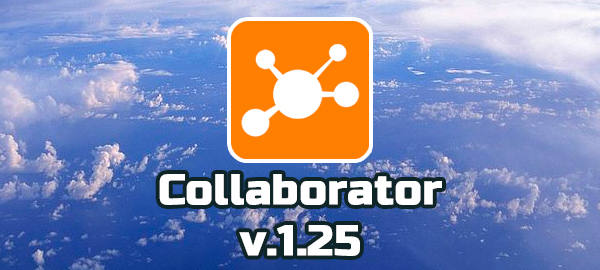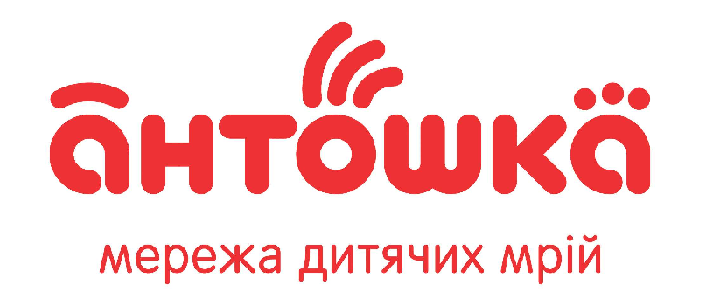
Collaborator v.1.25 – “Catalog of courses” evolution and new abilities of creative learning
Collaborator v.1.25.0 release – lots of essential improvements:
- Approach for providing learning materials at user’s option is worked over.
– Catalog of courses is rearranged into Catalog of tasks;
– Catalog is available for Guests;
– Task creation process is modernized;
– New filters for task management. - New type of question is available in polls – “Evaluate on scale”.
- New functions in tests.
– Importing of free-answer questions;
– Setting tags for test questions;
– New way of test question sampling – “By one question from each group”. - Test protocol for SCORM courses.
- Notifying users about news.
- Inserting of audio resource into resource-pages.
- Improvement of main portal’s page.
- Automatic termination of expired tasks.
- Many minor improvements:
– Number of mandatory fields in user sign up form is reduced;
– Notifying Administrators about self-facilitated sign up by new users;
– Notifying Users about changes in their email, login or password conducted by Administrators;
– New portal options: “do not overwrite login at import” and “prohibit login changing”;
– Directors may review reports on their subordinates participation in webinars;
– Directors may accept or refuse requests for additional testing attempts;
– “Manage only own training programs” right is added for roles;
– Reminders about enabling of browser notifications;
– Group operations of assigning notices to user are enhanced;
– Workshop discussion protocol could be printed out;
– Removing of text formatting in WYSIWYG editor is improved.
Totally, more than 150 changes aimed at development of functionality and improvement of new system functions operation are implemented.
1. Evolution of “Catalog of courses” into “Catalog of tasks”
Many popular platforms for distance learning have been created by taking into account needs of universities, schools and training centers. Basically, such institutions offer only courses to students. However, in modern education you have to offer the choice of another learning elements, such as a self-assessment test, an exerciser, a planned training or a webinar. Moreover, these elements could be given to users only as a part of a course.
In Collaborator, thanked to its architecture, we broke this approach. Starting form 1.25 version, it is possible to publish in Catalog not only a course, but also any other type of learning materials: books, videos, tests, webinars, training programs. Whatsoever! No limitations!
Now it is possible to give users an option to choose among several training tests or a possibility to subscribe for a planned webinar. All you have to do is to publish a task with such tests and webinars in Catalog and then notify users about it.
1.1. How it works.
We have removed publishing options from Courses into Tasks. Since now, any task with any content can appear in Catalog. These options could be found in “Assign mode” parameters:
- “assign manually” – as before, such task would not be displayed in Catalog and offered to users. Administrators by themselves need to select users, which have to complete it.
- “free access” – the task would be displayed in Catalog. Any user may choose it and start learning immediately.
- “submitting request” – the task would be displayed in Catalog and any user may submit a request for it. The task would be available for the user after Administration’s confirmation (see Processing learning requests).
If automation rules management is enabled in your Collaborator platform, you may use automated user assigning to preset events.
1.2. Catalog categories
Since Tasks are being published in Catalog now, so “Course and program categories” are transformed into “Catalog categories”, which could be managed in “Learning tasks” section.
Rubricator with unlimited nesting (needed for distributing of Catalog’s elements) could be built using Categories. Users may find them via search as well as by the tree of these Categories.
Approach to creating and changing of Category remained the same (more details here).
1.3. Filters for task management
Changes in Catalog effected on task management page. We added a filter for value type to save Administrator’s time spent on searching for a specific task. It speeds up assigning users to tasks, changing tasks, and reviewing reports.
Three filter types are available:
- “Manually” – filters tasks with compulsory assignment,
- “From catalog” – tasks, which are available for users from Catalog,
- “Automatically” – displays all tasks, which are being applied with automation rules.
1.4. Catalog for guests
When Collaborator works in open system regime, for instance portals of training centers or nonprofit organizations, it is needed to allow portal’s guests see accessible courses, tests, webinar, events and apply for them.
We added a permission in portal’s options allowing guests to review Catalog and choose something interesting for them. Applying request, they would be offered to sing up. Consequently, portal owner would receive a new user and the user would receive required information.
You may try how it works at corporate e-learning club portal: http://elclub.com.ua.

Portal’s guest may choose in Catalog what he or she is interested in and then sign up for accessing the desired information
1.5. Modernizations in creating of tasks
Besides changes in Catalog, we accelerated task creation. Since now, part of information is being filled in automatically according to data of content, which is used in the task.
Sequence of activities is as follows: select type of the task and published content. Task name and description would be automatically taken from chosen task parameters. This data could be amended at any time. Follow-up actions of task parameter setting depend upon content type and remained unchanged (more details here).
Catalog became more agile and convenient tool for publishing of various training activities. Now you have no constraints in selection of learning elements that could be interesting for your users.
We hope these improvements would allow you to realize any ideas aimed at organizing of training and increasing of user involvement.
2. Polls. New type of question – “Evaluate on scale”
In early autumn Prozorro team asked us to add into polls a capability to collect user’s evaluations on given scale. They wanted to receive from the users a numerical estimate of trainers’ activities on “Training for trainers” project all across the country. The numerical estimate had to be given by several criteria along with capability to view average result on each criterion.
Later, three more our client confirmed importance of this issue. Eventually this type of question was implemented in current 1.25 version of Collaborator.
We made it the way, so any number of criteria could be set in a single question and it is possible to add all kinds of numeric value, even negative ones. Different evaluation scales could be used for different questions – it makes poll settings more nuanced.
That is how users see “Evaluate on scale” questions:
Number of user who made an evaluation and arithmetic mean results would be displayed next to each criterion in the report.
3. New functions in tests.
3.1. Importing of free answer questions in test
Before 1.25 version, it was possible to import only two types of questions from a text file: single- and multiple answer questions. Using of the text file gives the following advantages:
- no need in special word processor, any text editor is enough, e.g. standard Windows Notepad;
- you may create questions even without internet connection, when you have a minute. And, any moment you may import the questions into desired test – it takes several seconds;
- the questions could be improved by Collaborator means after importing: add images or video, change font formatting, etc. In addition, it is possible to change question type and answer variants.
In this version, we added ability of importing/exporting free answer questions – it would help you to shorten time for test creation in Collaborator.
It is very easy to create file for importing. Approach is same as for another question types: just start writing you question in new line and give number to your question. Answer variant are not needed. Here is an example of such text file for importing:
1. What do you need to restore your access to the System? (?) You need to know login and email registered in the system (!) It is enough to know your email (?) It is enough to know your login 2. What data should be entered to sign up? (!) My own email (?) My company or department email (?) My home address 3. What are the ways for searching information in our e-learning system?
Detailed description about how to prepare text file with question for importing into tests could be found in our Wiki.
3.2. Tags for test questions
Several our clients asked to add tags for test questions. Tags are being set while creating question and lighten search of previously created questions when you copy them from one test to another. This feature is implemented now.
The tag could be set while editing a question or by “Add tag” group action, when several test questions are selected.
When you are adding question form another test, tags will allow you to filter questions and quicker find the desired one.
3.3. Question groups in a test
Here is an issue, which could be resolved by this feature:
Plenty of analogues questions on arithmetic that check same knowledge are being created in a test. For example, skills in arithmetic adding could be checked by the following question group: “What is 2+2?”, “What is 2+4?”, “What is 1+2?”, “What is 3+2?”, etc. In addition, there are other groups of monotypic questions in this test. They check skills in arithmetic multiplication, division, extraction of root and other.
There is no need to ask similar questions in the test – one question from each group is just enough. However, it is desirable not ask one and the same question at each test attempt, i.e. one random question from each group should be given to the user.
To make it possible, we added “group” parameter to the questions and “By one question from each group” parameter in testing task settings in “Number of questions” option.
If you chose this parameter, the system would show you a message like this: (there are 15 groups in the test – 15 questions would be given). You can immediately see how many test questions will be given to users. And, if this number is low, you may add questions by increasing question groups.
4. Test protocol for SCORM
In this Collaborator version, it is possible to compile a test protocol on forwarding of SCORM-packets, which contain final test. When such SCORM course is completed, a report maintaining user’s answers, its correctness, and overall result would be generated.
5. Notifying users about news
News module displays news feed available for all users. However, there is a pending issue to complementary inform defined users about something, which is important for their work. For example, it could be employees of specific job position or from certain department, city, etc.
In 1.25 version, after publishing news you may notify particular users about its occurrence. This could be done via user assigning tools.
Several users (employees) could be assigned for the news, and immediately they would receive email message for acquaintance about the publication.

The message could be sent one more time excluding resending to those, who has already received this message
The message could be resent. At that, it is possible to omit those, who has already received this message.
6. Audio resources in resource-pages
Inserting of different resource types like video clips, galleries, HTML-sites into resource-page has been already possible in Collaborator. Since Collaborator v. 1.25 audio resources expanded this list.
Now you have different ways of creating interesting learning materials, which could contain not only texts, but also animation, interactive resources, video and audio information. There is everything needed for creation of qualitative Long Read resources and interesting interactive learning materials, which would excellently work on all devices and in all browsers.
7. Main page
We have performed main page usage analysis. It turned up that users very rarely or even never change block layout at the main page. Hence, we take away feature for tuning up main page. Since now, only Administrator could set up main page.
In addition, we changed information block layout at the main page, so the most important information is always in plain sight.
Each role in Collaborator has own main page settings. Information block widgets could be placed in three columns.
The first column is bigger than others and by default contains block with user’s task list. This block is the first thing seen by users after portal entering. Quick filters are enabled for this list: New, Failed, Expired, Completed.
The second column is intended for notices, news and notifications.
The last column displays user status and rating.
8. Automatic termination of expired tasks
If you used time-limited tasks in your courses, you might notice that these tasks’ status remained unchanged (“in process”) when they were unfinished. You had to enable automatic notification about unfinished tasks in order to remind users about unfinished tasks. Sometimes even this does not help and need to call users and remind in person.
Since now, if a task were not completed on time, it would be automatically finished when time is expired. Gathered points would evaluate the automatically received result. If number of points is less than passing threshold, the task will be failed and vice versa.
If “Do not block access after expiration date” option is enabled, the user will be able to retake the task, which was automatically terminated.
Automatic termination feature allows reducing number of tasks, which have been started by the user and then left behind. In most cases, such tasks will automatically receive “failed” status and this could increase the chances that users would pay attention to those tasks and retake them.
9. Shortly about other changes and modifications
9.1. Number of fields, which should be filled in by the users during account registration is reduced.
9.2. If new users signed up by themselves, Administrator would receive notification that contains these users’ account credentials. Now it is easier to control user registration.
9.3. When Administrator manually changes user’s login, email or password, the user will receive an email message containing new parameters. In such a manner, the user will be notified about these changes.
9.4. “Do not overwrite login at import” and “Prohibit login changing” options are implemented into portal settings. By default, the users are permitted to change their login email in Collaborator. The first option forbids change of user login (created by him- or herself) into one, which automatically comes along with import. And the second prohibits the user to change his or her login manually.
9.5. Users with Director role may review reports on their subordinates participation in webinars. In previous Collaborator versions, it has been already possible for Directors to access reports on their subordinates’ learning results.
9.6. Directors may accept or refuse requests for additional testing attempts from their subordinates.
9.7. “Manage only own training programs” right is added into access right list, which is used for role configuration in Collaborator. This rule allows limiting Author’s access to someone else’s learning programs.
9.8. Reminders about enabling of browser notifications are added. These notifications are needed for efficient communication in Chat, Forum, Comments, Notice, etc.

9.9. The user-assigning tool is enhanced with quick user selection options: “all visible” – users on current table page, “no one” – reset selection, “select filtered” – all user defined by filter in all table pages.

9.10. Now it possible to print out conversation between lecturer and participant in Workshop.

9.11. Removing of text formatting in WYSIWYG editor is improved. Now, formatting is being reset only for highlighted text fragment.

We try to make work and learning process for user in Collaborator as fast and efficient as possible. Our tools save time and present features for artwork. Introduce interesting and useful education for your company and we will help you to implement your creative ideas.
Faithfully yours,
“Collaborator” team.



































